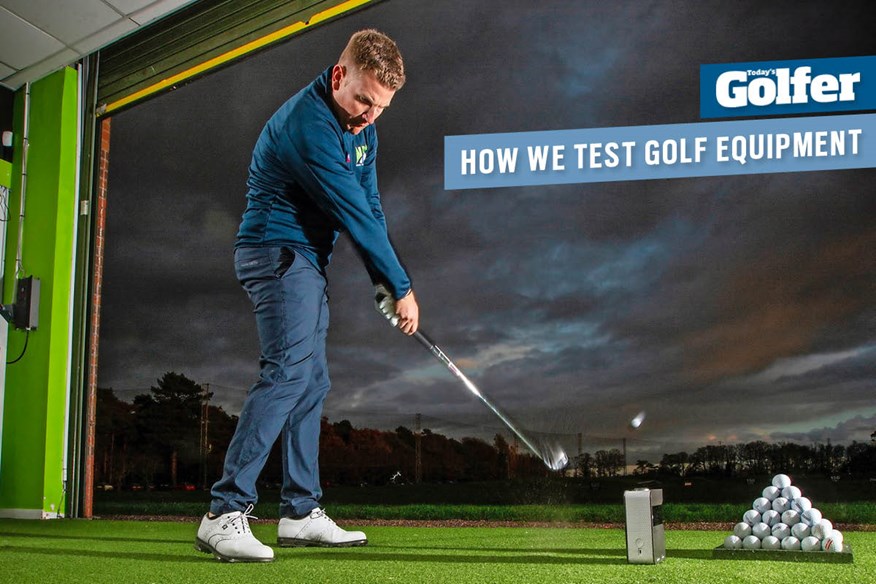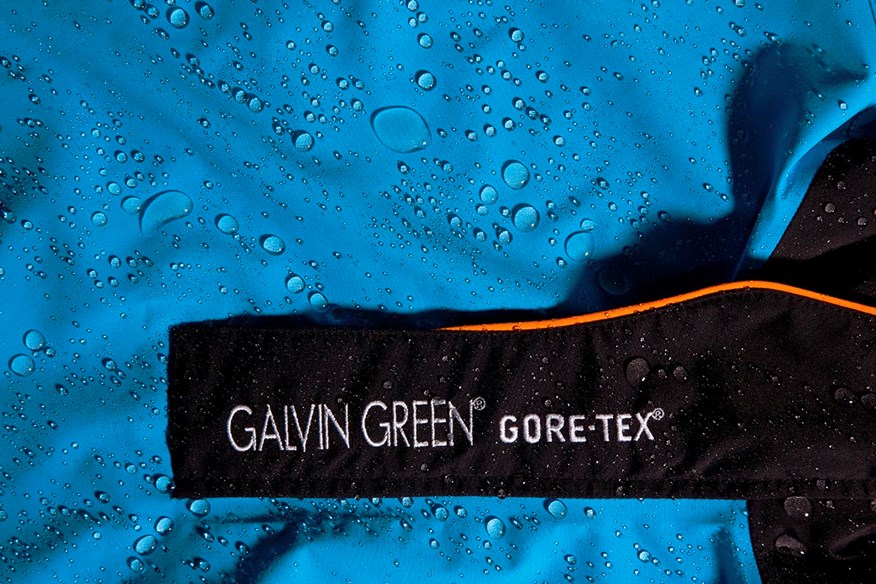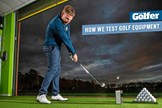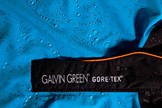How we test golf equipment at Today’s Golfer
Last updated:
At Today’s Golfer we have decades of history carrying out the most useful, insightful, and in-depth product reviews available. Here’s what goes on behind the scenes as we conduct our tests and reviews of golf clubs, balls, clothing, shoes, trolleys, GPS devices, and accessories.
JUMP TO:
– How we test golf clubs
– How we test golf balls
– How we test golf shoes
– How we test golf apparel
– How we test golf bags
– How we test golf trolleys
– How we test lasers, watches and GPS
– How we test training aids
– Who tests products for us?
Golf equipment doesn’t come cheap, so it’s important to make sure the gear you buy is the best fit for your game. Whether that’s golf clubs and balls, shoes and apparel, bags and trolleys, or even umbrellas and tee pegs, our knowledge and first-hand experience will help you make the best choice every time.
For more than three decades, Today’s Golfer has been testing and comparing all the latest and greatest equipment in golf. Today, thanks to advances in technology, our testing protocol is more detailed and reliable than ever before. Here’s how we do it…
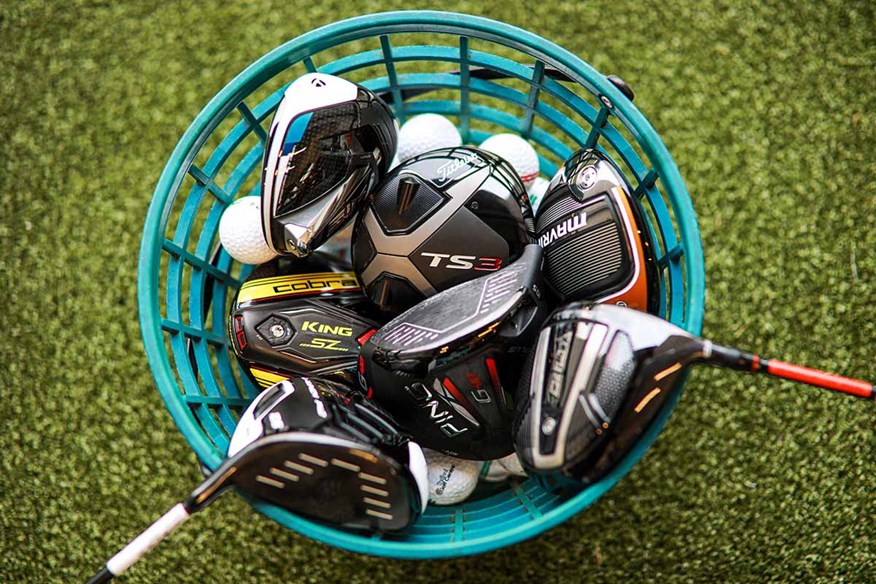
How Today’s Golfer tests golf clubs
To ensure we produce the most accurate and reliable test data available, we create a controlled environment indoors at Keele Golf Centre, here in the UK. And to reassure golfers we have no bias towards any golf ball brand we like to use a different premium golf ball supplier for our club testing each year. Since 2020 we’ve used the TaylorMade TP5x, Callaway Chrome Soft X, Srixon Z-Star XV and for 2024 we’re using the market-leading Titleist Pro V1x, all of which were highlighted as top performers in our most recent robot golf balls test.
We collect data points from the ball and club for every shot hit using a Foresight GQ Quad launch monitor. We chose Foresight as their launch monitors are recognized as industry-leading and they replicate the technology employed by top brands when testing their own clubs and balls. They’re also owned by many of the best players in the world.
In line with the thinking of top engineers at golf’s biggest brands, we believe it’s imperative to have a consistent and accurate striker when testing clubs and balls and by doing so we ensure we only create the most reliable and consistent comparisons available. Anything other just leads to comparing apples to pears, which can be misleading and obviously isn’t good for consumers. Our main club tester is PGA Professional and Custom Fit Technician Neil Wain. We choose Neil as he’s a very consistent striker of the golf ball, which means we don’t need to remove lots of mishit data (which is an inefficient use of energy and hitting time). It also allows us to create clean accurate comparison data which can be relied upon for proper analysis.
As an amateur, Neil played for England, before turning professional off a +4 handicap. He’s a fully qualified PGA Professional and is respected amongst his peers as a player, teacher, and custom fitter. Neil’s time today is split between teaching and custom-fitting golf equipment at Keele Golf Centre in Staffordshire.
Neil has worked hard on his attack angle over the last few years to ensure he doesn’t hit down on the ball with a driver, which isn’t optimal. Today his driver delivery is quite neutral, which is perfect for creating comparative data showing how forgiving drivers compare to low spin models. While testing with TG since 2016 he’s had several hole-in-ones with irons and wedges, which highlights his accuracy and consistency.
When we test Draw Drivers and Moderate Speed models we use 10-Handicap Equipment Editor Simon Daddow, who has a swing speed of 89 MPH (92 MPH is amateur average) to reflect the results lower speed players can expect to see. Simon has 30 years’ experience of working within the golf industry, he’s led Product Development at Benross golf and is a short but consistent hitter.
When collecting comparative test data these are the two golfers we use. Although for on-course insight and further real-world feedback we also turn to 12-handicap TG Editor Chris Jones, 9-handicap Digital Editor Rob Jerram and 3-handicap Digital Contributing Editor Rob McGarr.
Unlike many media outlets, we openly share the launch monitor data we collate during our tests, enabling golfers to delve deep into the detail and make their own choices based on what’s most important to them.

How we test drivers
Our test spec for drivers is 10.5° loft with a stock stiff flex shaft. Shots are always teed up, and our launch monitor keeps an eye on impact location and records how shots are launched into the air and where they go.
For each model we capture data for 12 shots our test pro is happy with. Only once all clubs within a test have been hit do we start looking to analyse the data. If a driver is spinning significantly higher than Neil’s optimal level we will dial down loft to set the club up optimally for the tester. Where this happens we of course show both data sets so golfers can see the difference made by various settings.
When drivers have multiple weight set-ups that can affect ball speed and distance (so front and back weight options, not weighting to influence shot shape) we’ll test in each set-up to give golfers an idea of the difference they can expect in terms of launch, spin, shot height and descent angle, which can make big differences to ball speed and carry distances on the golf course.
When analysing our data we look at ball speed and carry distance to see which models are the fastest and longest, as these are the traits most golfers desire. Our recommendations also consider backspin, peak height and descent angle as these have a crucial impact on distance, consistency and accuracy.
Virtually all golfers want a degree of forgiveness from their driver too, so we also look at how far shots have travelled offline, and the difference between our testers longest and shortest hits. By multiplying the difference between the furthest left to furthest right by the drop off from the longest to shortest hits we get a dispersion/shot area (in SQ YDS) to guide golfers to the most accurate/forgiving option. After considering all this information we translate our findings into an easily understandable star rating for each individual product tested. Five-star reviews represent our best performing equipment of the year. These are the models if we were spending our own money we’d buy for our own game. Four-star reviews also represent excellent performing products, but they may well be clubs in their second year of product cycle. Where three, two and one stars reviews are products we just can’t fully endorse as we know there’s better performing models out there.
See our pick of the best golf drivers here.
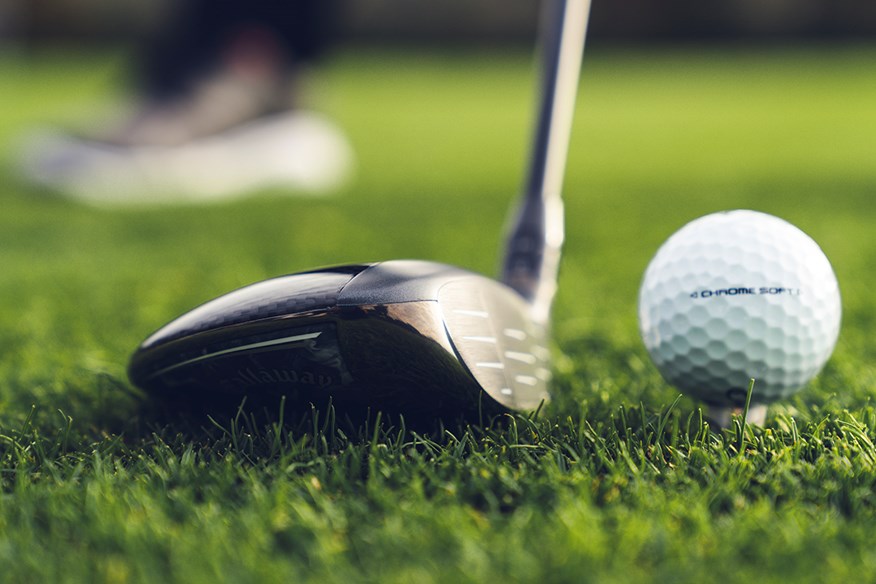
How we test fairway woods
Our test spec for fairway woods is 15° loft with a stock stiff flex shaft. Shots are hit from a range mat into an indoor net, while our launch monitor keeps an eye on impact location and records how shots are launched into the air and where they go.
For each model tested we capture data for 12 shots our test pro is happy with. Only once all clubs within a test have been hit do we start looking at analyzing the data.
When analyzing our data, we look at ball speed and carry distance to see which models are the fastest and longest as these are the traits most golfers want more of. Our recommendations though also consider backspin, peak height, and descent angle as these can have a crucial impact on distance, consistency, and accuracy.
Virtually all golfers want a degree of forgiveness from their fairway woods, so we also look at how far shots have travelled offline, and the difference between our tester’s longest and shortest hits. By multiplying the difference between the furthest left to furthest right by the drop off from the longest to shortest we get a dispersion/shot area (in SQ YDS) to guide golfers to the most accurate option.
The beauty of using just one tester means when brands like TaylorMade, Callaway, Ping, and Titleist make three or more fairway woods our data shows a comparison between them all. So golfers can see the benefit of faster and farther lower spin models, or what they give up in terms of yardage to play a slightly higher spin more forgiving fairway wood option.
After considering all this information we translate our findings into easily understandable star ratings for each individual product tested. Five-star reviews represent our best-performing equipment of the year. These are the models if we were spending our own money we’d buy for our own game. Four-star reviews also represent excellent performing products but may well be clubs in their second year of product cycle. Where three, two and one-star reviews are products we just can’t fully endorse as we know there’s better-performing models out there.
See our pick of the best fairway woods here.
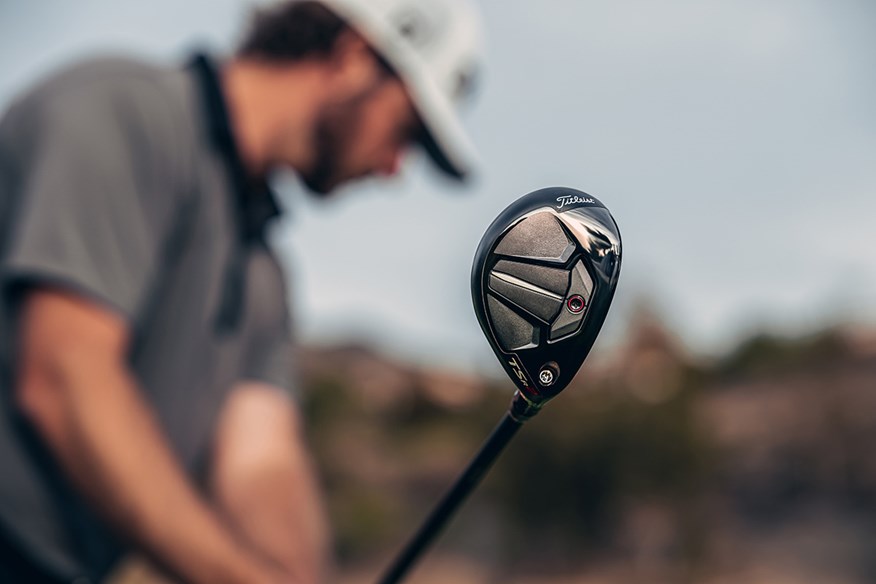
How we test hybrids
Our test spec for hybrids is 20° loft with a stock stiff flex shaft. Shots are hit from a range mat into an indoor net, while our launch monitor keeps an eye on impact location and records how shots are launched into the air and where they go.
For each model tested we capture data for 12 shots our test pro is happy with. Only once all clubs within a test have been hit do we start looking at analyzing the data.
When analyzing our data, we look at ball speed and carry distance to see which models are the fastest and longest as these are the traits most golfers desire. Our recommendations also consider spin, peak height, and descent angle as these can have a dramatic impact on distance, consistency, and accuracy.
Virtually all golfers want a degree of forgiveness from their hybrids, so we also look at how far shots have travelled offline, and the difference between our tester’s longest and shortest hits. By multiplying the difference between the furthest left to furthest right by the drop-off from the longest to shortest shots we get a dispersion/shot area (in SQ YDS) to guide golfers to the most accurate option.
The beauty of using just one tester means when brands like TaylorMade, Callaway, and Titleist make three hybrid options, our data shows a comparison between them all. Golfers can then spot the benefit of faster and farther lower spin models, or what they give up in terms of yardage to play a slightly higher spin more forgiving hybrid option.
After considering all this information we translate our findings into easily understandable star ratings for each product tested. Five-star reviews represent our best-performing equipment of the year. These are the models if we were spending our own money we’d buy for our own game. Four-star reviews also represent excellent performing products, but they may well be clubs in their second year of the product cycle. Where three-, two-, and one-star reviews are products we just can’t fully endorse as we know there are better-performing models out there.
See our pick of the best hybrid golf clubs.
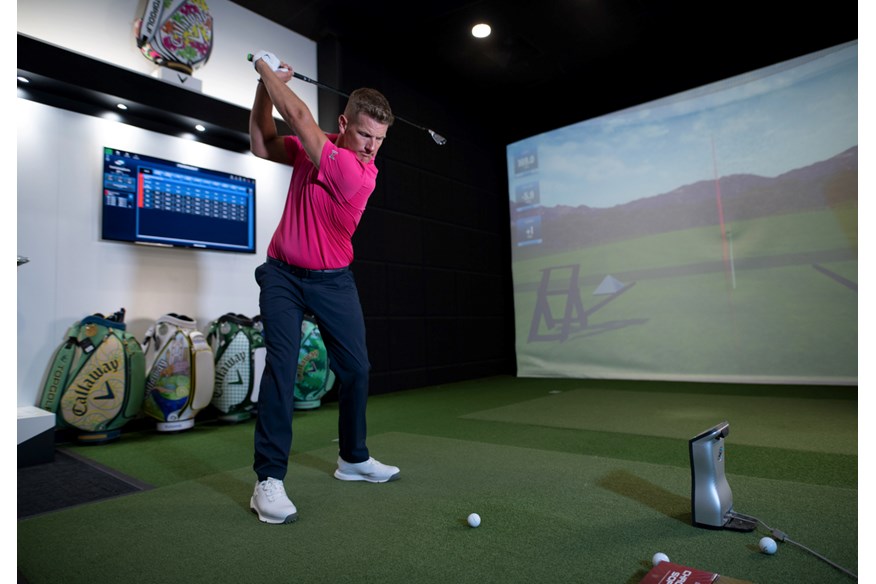
How we test irons
We test 7-irons in a stock stiff flex steel shaft from any set, irrespective of what loft the iron may be. Shots are hit from a range mat into an indoor net, while our launch monitor keeps an eye on impact location and records how shots are launched into the air and where they go. With so many irons on the market, we split models into either a muscle-back blade, players’ iron, players’ distance iron, mid-handicap iron, high-handicap/moderate speed iron, or a hybrid iron category.
We also request a 5-iron and Pitching Wedge from each set submitted for review. We don’t routinely collect data from these, but we use them for reviewing head shapes and profiles. Plus, if there’s any particular head tech that’s only relevant to a set’s long or short irons we’ll hit them too.
For each model tested we capture data for 12 shots our test pro is happy with. Only once all clubs within a test have been hit do we start looking at analyzing the data.
When analyzing our data carry distance is a huge factor as it’s important to many golfers on the golf course. For irons especially we also look very closely at backspin, peak height, and descent angle as these play a crucial role in being able to score on the golf course.
Virtually all golfers want a degree of forgiveness from their irons, so we also look at how far shots have travelled offline, and the difference between our tester’s longest and shortest hits. By multiplying the difference between the furthest left to furthest right by the drop-off from the longest to shortest hits we get a dispersion/shot area (in SQ YDS) to guide golfers to the most accurate iron option.
Lots of golfers talk about the ‘feel’ of irons, wedges, or putters. But with feel being so subjective, and most golfers experiencing a different impact sensation, we only mention feel when a particular product stands head and shoulders above its peers. More often we prefer to stick to measurable metrics generated by our launch monitor.
The beauty of using just one tester means when brands like TaylorMade, Callaway, Ping, and Titleist make six or more different iron models our data shows a comparison between them all. Golfers can see the benefit of stronger or weaker lofts, more hosel offset, and what they give up by playing models that might be above their level of ability.
After considering all this information we translate our findings into easily understandable star ratings for each product tested. Five-star reviews represent our best-performing equipment of the year. These are the models if we were spending our own money we’d buy for our own game. Four-star reviews also represent excellent performing products but may well be clubs in their second year of product cycle. Where three, two and one-star reviews are products we just can’t fully endorse as we know there are better performers out there.
Here’s what we think are the best golf irons.

How we test wedges
We test 52° wedges with a stock steel wedge shaft. Shots are hit from a range mat into an indoor net, while our launch monitor keeps an eye on impact location and records how much shots spin and where they go.
We also request a 58° loft of each wedge submitted for review. We don’t routinely collect data from this loft, but we use them for reviewing head shapes and profiles and can use them for hitting shots outdoors from real sand.
For each model tested we capture data for 12 shots our test pro is happy with. Only once all clubs within a test have been hit do we start looking at analyzing the data.
When analyzing our data backspin is a huge factor as it’s often the most important trait golfers look for when buying new wedges. It’s also crucial to generating control and on-course consistency.
Many golfers will talk about the ‘feel’ of irons, wedges, or putters. But with feel being so subjective, and most golfers experiencing a different impact sensation we only mention feel when a particular product stands head and shoulders above its peers. More often we prefer to stick to measurable metrics generated by our launch monitor.
The beauty of using just one tester means when brands like Cleveland, TaylorMade, and Callaway make two or more different wedge models our data shows a comparison between them all. So golfers can see the benefit of cavity backs, different groove configurations, and various head materials all within a single test.
After considering all this information we translate our findings into easily understandable star ratings for each product tested. Five-star reviews represent our best-performing equipment of the year. These are the models if we were spending our own money we’d buy for our own game. Four-star reviews also represent excellent performing products but may well be clubs in their second year of the product cycle. Where three-, two-, and one-star reviews are products we just can’t fully endorse as we know there are better performers out there.
Here’s our pick of the best golf wedges.
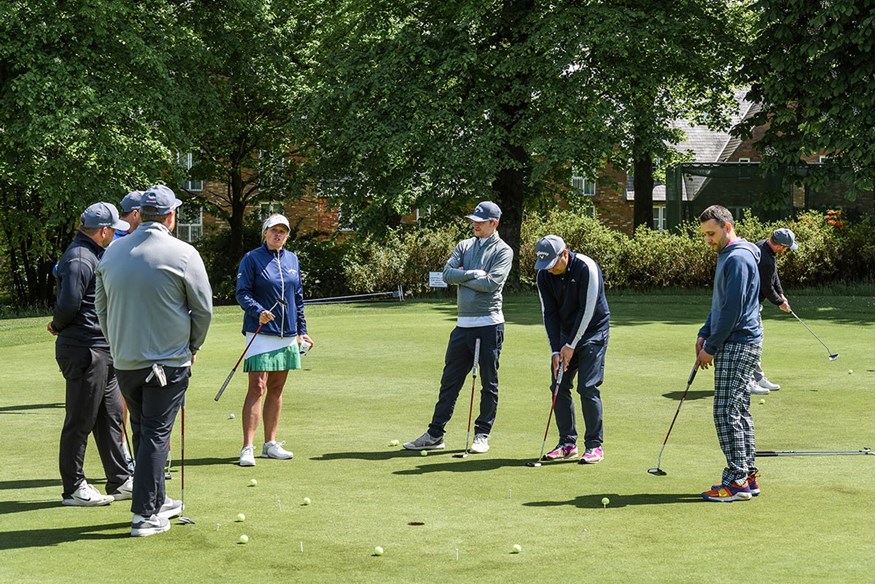
How we test putters
When testing putters, we set up an indoor test lab, which ensures putts run across a smooth consistent surface. We use a Foresight GC Quad launch monitor in putting mode to measure and gauge the roll, topspin, and skid of every putt hit. Over the years though we’ve learned that putting data is more player- and day-dependent than any other club in the bag. So, whilst we use this data for analysis, we don’t base big decisions or recommendations on it, as history shows data is very likely to be different on another day’s testing.
We putt to a hole 15 feet away and look to hit at least 20 putts with each model tested. We’re listening for sound, looking for how putts roll across the surface of the green and gauging the feel and feedback of the putter face. We consider the grip size, shape, and texture whilst also paying attention to the shaft and off-center hit stability of every model.
To aid golfers in identifying models that will suit them we also break putters down into blade, mallet, and MOI categories.
Once the putters have been tested within our indoor controlled environment our test team takes them to the course to test each model in the real world. By doing this we ensure we’ve hit putts from distance, holed out under pressure, and tried to use the putter as a ball scoop. Giving us a full-blown picture of how each putter performs in a lab and on the golf course.
After carefully considering all this information we translate our findings into easily understandable star ratings for each product tested. Five-star reviews represent our best-performing equipment of the year. These are the models if we were spending our own money we’d buy for our own game. Four-star reviews also represent excellent performing products but may well be clubs in their second year of the product cycle. Where three, two, and one-star reviews are products we just can’t fully endorse as we know there are better performers out there.
Check out our picks of the best putters.
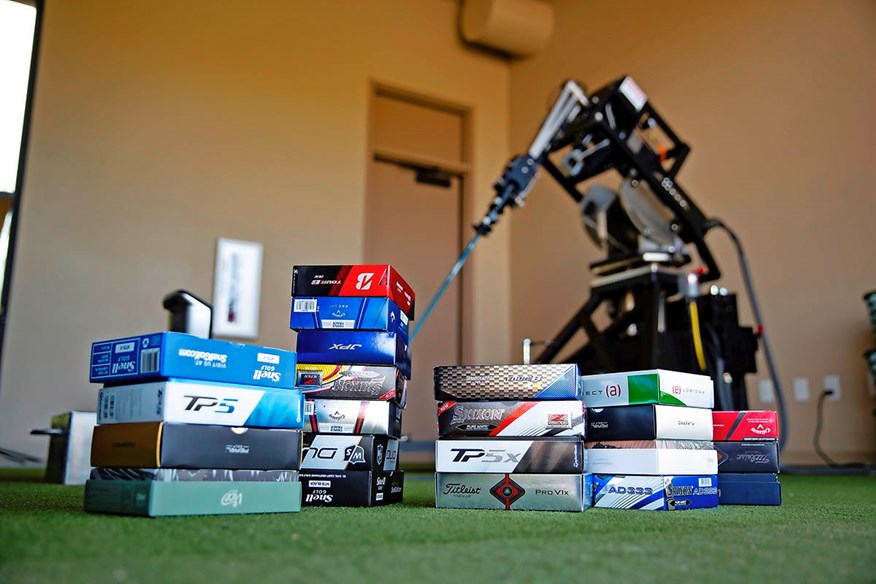
How we test golf balls
Even the world’s best golfers can’t hit a ball the same way, time after time, so we run an annual robot golf ball test to help golfers identify the best-performing golf balls on the market. We do so as it’s the only way to guarantee the consistency of strike that isolates the one variable we are trying to test: the performance of the golf ball.
Human testing is crucial for intangibles like looks and feel, but to ensure consistent, reliable, irrefutable data every golf manufacturer uses a robot when developing golf balls and we feel it’s vital to do the same when testing them.
We collaborate with the Sports Technology Institute at Loughborough University, where Senior Lecturer Dr Jonathan Roberts and his team run an annual robot golf ball test on our behalf. Dr Jonathan Roberts has worked at Loughborough for 25 years, and he’s completed a Callaway-sponsored PHD, consulted for Nike, and most recently worked closely with Ping to set up the university robot so it can replicate any golfer’s swing and delivery. No other robot in the world can do this. Dr Roberts has also been involved with the research group tasked with designing the last 20 years’ worth of World Cup footballs for adidas.
The university’s 20-year-old $100,000 Japanese Miyamae Robot V works on three axes, with each being controlled independently. It’s possible to replicate how golfers load the shaft at the top and turn and rotate the wrists coming into impact. Thanks to the robot’s adjustability it’s also possible to control lie angle, swing path, face angle, attack angle, impact location, hip rotation, and wrist action at swing speeds from 5 – 130 MPH. Simply put there isn’t a better robot out there for replicating real golfer swings, hence why Ping also use the robot to test products using data garnered from real-world golfers.
We test multiple models of balls at a time (in 2023 it was 28 different varieties) across the space of two weeks. To ensure we create data that’s relevant to all the robot is set up to replicate slow (85 MPH), mid (100 MPH) and fast (115MPH) swing speeds. All shots are teed up and hit from the center of the face. And to get a full game picture, we run the same tests with driver, 7-iron, and pitching wedge at specs relevant to the test speed.
Before and during testing, all balls are kept in a temperature-controlled environment. To ensure no outside contamination we only ever hit each ball once. With each packet of balls individually marked we can also identify any sleeve should we need to conduct further investigation into abnormal results by cutting balls open to check for off-center cores, asymmetries, or construction deficiencies.
Once the balls have been tested within our indoor controlled environment, our test team take them to the course to use each model in the real world. By doing so we ensure the robot numbers match up with what we see in ball flight, and how the ball reacts on the green. On-course testing also enables us to hit a variety of shots to gauge feel, feedback, and responsiveness from various situations, and check durability.
Throughout a season, we run multiple on-course head-to-head golf ball tests as new golf ball models are launched, ensuring golfers have the most up-to-date and current information. The ultimate goal is always getting each model involved in the next available robot test.
Check out our picks of the best golf balls.
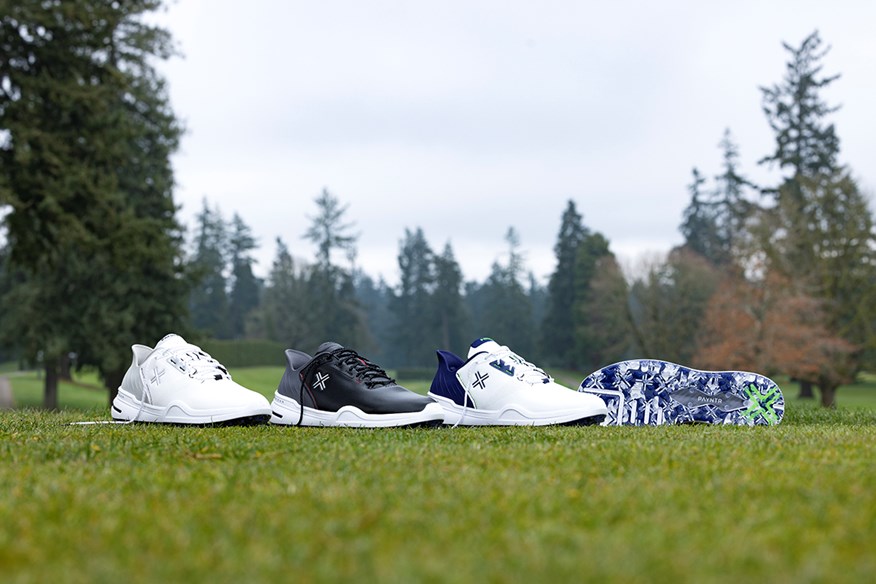
How we test golf shoes
When testing golf shoes, we aim to put them through different scenarios on the golf course over multiple rounds and, where possible, in different conditions. We have a team of carefully selected reviewers to test and assess each product over an extended period. We pay particular attention to grip, durability, versatility, comfort, and fit.
Having tested hundreds of pairs over the years, we know exactly what to look for, and will ask every possible question of each shoe we review. The review team are all keen golfers so understand what makes a good or a bad golf shoe and will look out for the minor details such as which models run big or small, how easy are they to clean, any potential rubbing on the toes or heel, and whether the shoe could realistically be worn off the course as well as on it.
Here are the models we think are the best golf shoes.
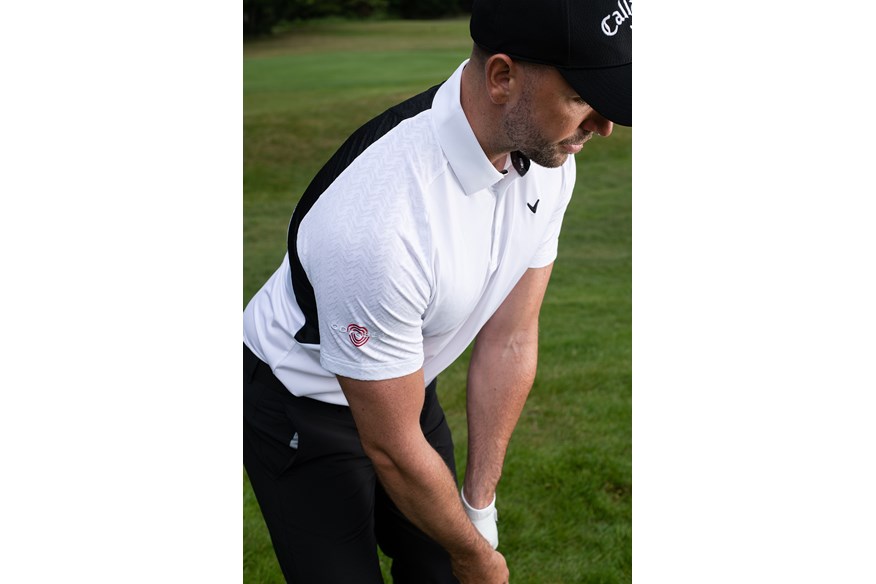
How we test golf apparel
We endeavor to test golf apparel in the conditions each product is specifically designed for. That means waterproof jackets in the rain, insulated items on cold days, and so on.
We play close attention to how the item fits and feels, particularly during a golf swing. Golf is hard enough without your movements being restricted by clothing that doesn’t fit or move the way it should, so clothing that stretches and moves freely is vital.
With lots of golf apparel coming in at premium price points, we also consider whether or not the item being reviewed justifies its price tag.
Check out our picks of the best golf trousers, best golf polo shirts, best golf mid-layers, and best golf waterproof jackets.

How we test golf bags
The Today’s Golfer team have tested hundreds of bags over the years and are split evenly between those who prefer to carry and those who prefer to cart their clubs around the course, meaning we always have someone well placed to test the latest releases.
Top of our priorities when reviewing golf bags is practicality: is the bag fit for purpose and does it make life easier on the course? Do clubs slide in and out easily, or do they tend to get tangled and stuck? Is there plenty of storage?
For carry bags, do the legs pop out seamlessly when you place the bag on the ground and then pop back in without catching when you pick it up again? Is the bag sturdy when stood on a slope or in strong winds? Is it comfortable to carry? For cart bags, we’re looking at the base of the bag and how well it will mount on a golf trolley.
Once we’ve loaded up a new arrival with our full artillery of clubs and accessories, we take the bag out for a spin. No one wants unnecessary weight, and with the best bags constructed from lightweight high-tech and durable fabrics, there really is no excuse for a bag that feels overly cumbersome – even if you’re just mounting it to a set of wheels. With rain clouds never far away (in the UK at least), we feel waterproofing is an essential consideration too. A good bag in our books will repel water as a minimum and if the material can’t protect your valuables and spare clothing, then it’s hard to justify scoring highly.
We’re big fans of functional storage space. Who likes stabbing themselves in a haystack of tees when trying to find a pitch repair tool, or fumbling around for your car keys among the debris of damp waterproofs and empty Coke bottles? It’s not the number of pockets, but the mixture of sizes and accessibility that counts, ensuring you do not have to merge accessories randomly. When it comes to carry bags, we scrutinize carry comfort, considering how well-balanced the bag feels across our shoulders and any concerns we have from an injury prevention perspective.
Finally, a quality golf bag is something you shouldn’t have to replace for a good number of years and therefore its robustness and durability is a non-negotiable for us. And while we may not be self-professed culture vultures, we’ve seen enough sights on the golf course to know what you can get away with, and are happy to say when we’re unsure on aesthetics!
Check out the models we think are the best golf bags available.
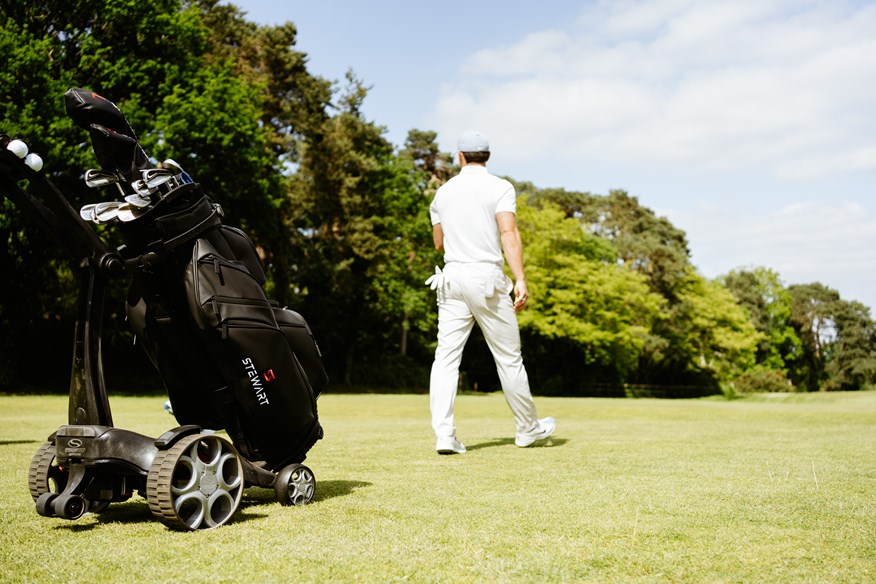
How we test golf trolleys
We believe there are certain things all golfers look for when it comes to choosing a golf trolley, and consequently focus our testing on those aspects.
We test how quick and easy the trolley is to assemble and disassemble, plus how compact it is when folded down. We consider the weight of the trolley and how easy it is to get in and out of the car boot. We test how maneuverable the trolley is on the golf course, as well as how well the grip and stability handle undulating terrain.
With electric trolleys, we also look at battery life and charging time, and test any additional features such as remote controls, any ‘follow’ functionality, plus built-in screens and GPS devices.
Here are our picks of the best golf trolleys.

How we test GPS devices, golf watches, and laser rangefinders
As we review a lot of golf tech, we understand that such gadgets need to be used for an extended period to fully test all the functionality and identify any glitches or gripes that might appear. Testing in this way also gives us an idea of durability, battery life, and how the device performs in different conditions (like a touchscreen watch in the rain or a laser rangefinder on a foggy day, for example).
With rangefinders we want to see how easy it is to get out of the case, how quick and easy it is to zap the pin, and how it performs in rain, wind, and bright sunlight. We also make a note of size, how the rangefinder feels to hold, and the build quality.
With watches and GPS devices, we test the accuracy of the yardages, as without that any other functionality becomes virtually useless. We also examine how easy it is to use and navigate, the size and quality of the display, and the reliability of any shot-tracking data. If it’s a watch that has non-golf uses such as fitness tracking, we endeavor to test these briefly but golf always remains our main focus. Battery life and charging time is another key factor we look at.
Check out the best golf GPS devices, best golf watches, and best golf rangefinders.
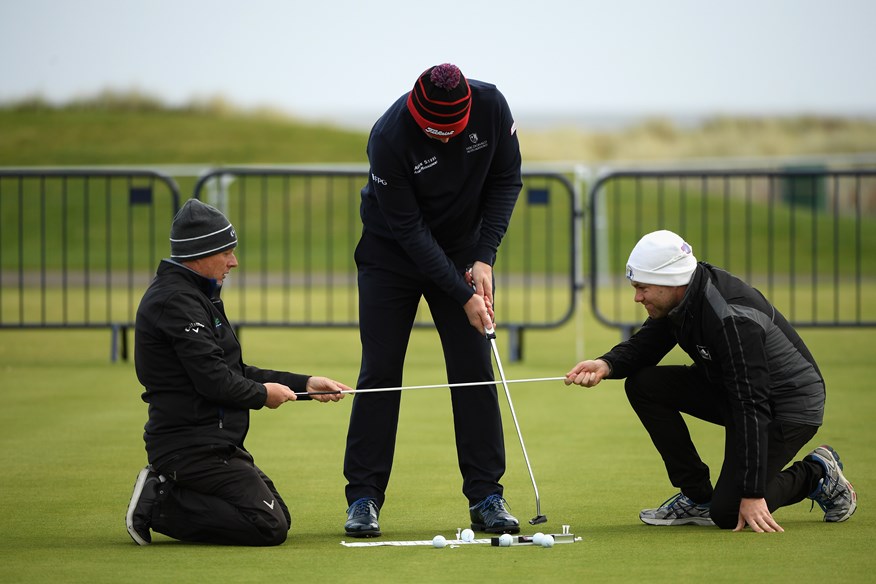
How we test training aids
There is an absolute abundance of training aids available to golfers and we pride ourselves on finding the ones that work best to ensure you’re getting the most from your practice time.
When we test training aids we look for durability, usability, ease of transport, storage, value for money, and above all else whether it helps to better your game.
We also examine how simple the training aid is to use, because you don’t want to spend an eternity trying to understand complicated instructions and set the product up when you could be using that time to practice.
As keen golfers all looking to improve, we continue to use training aids that we feel really help, in some cases for many years.
Here’s what we feel are the best golf training aids.
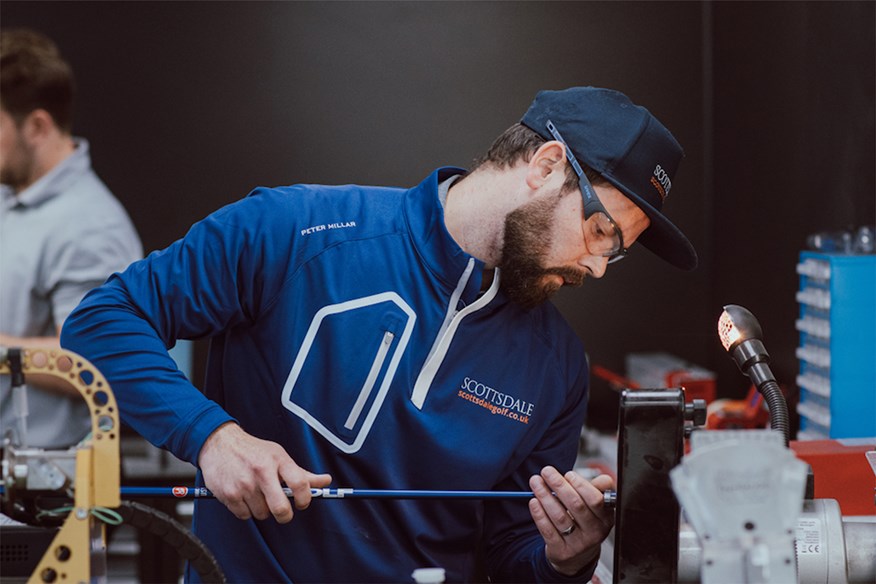
Do we physically test every product we feature on our website?
No, and we feel it’s vital that we are honest about that. On the odd occasion, we will feature a product that we haven’t physically tested, but we will only do so if we are certain that it belongs in our guides. In those cases, we’ll lean on our industry experience and knowledge to recommend a product to our readers. Everyone who works for todays-golfer.com is an experienced golfer with a vast knowledge of brands, products, and what works for our audience. Many of our team have also worked for equipment brands or leading golf retailers.
In the case of golf clubs, any that feature in our best pages will have been tested by our test pro Neil Wain or, if appropriate, another member of the team, and we’ll show all of the data to help you make your buying decisions.
We also test all golf balls, whether it’s via our market-leading robot test or by putting them into long-term play during our own rounds.
When it comes to apparel and shoes, we will have worn the vast majority for at least one full round of golf, and often many more, before we are willing to include them within a ‘best’ page.
The same goes for golf watches, GPS devices, DMDs, trolleys, and bags.
Can manufacturers pay for a positive review?
No. Despite popular opinion, we don’t care if a brand spends money to advertise with us, takes our team on a launch event, or begs us to say nice things about their products. We will be honest with you. If a product performs well or badly we will tell you and, where applicable, present the data to back that up. We don’t want to recommend a product to you that we would not be willing to spend our own money on.
Who tests products for Today’s Golfer?
Equipment Editor Simon Daddow heads up our testing team and works closely with Neil Wain, our PGA Professional based at Keele Golf Centre. The pair are assisted by Digital Editor Rob Jerram, and equipment writers Will Shreeve-Peacock, Ross Tugwood, and James Hogg. Between the testing team we have more than 100 years’ experience playing golf and testing equipment.
With so much new golf equipment released every year, we take a category leaders approach to ensure we have experts in different areas of the market. A small team of reviewers owns each category, testing products and working under an experienced head of category.
By dividing golf equipment into categories, the team are in a better position to compare between brands, identify stand-out products and trends, and offer game-improving buying advice.
Here’s who is in charge of each category:
Drivers, Golf Balls & Package Sets: Simon Daddow, Neil Wain
Fairway Woods, Hybrids, Irons: Simon Daddow, Neil Wain, James Hogg
Utility Irons & Putters: Simon Daddow, James Hogg, Neil Wain
Wedges: Simon Daddow, Will Shreeve-Peacock, Neil Wain
Tech & GPS/Lasers: Rob Jerram, Will Shreeve-Peacock, Ross Tugwood
Shoes, Bags & Trolleys: Rob Jerram, Will Shreeve-Peacock, James Hogg, Ross Tugwood
Golf balls: Simon Daddow, Rob Jerram, James Hogg
Apparel: Rob Jerram, Ross Tugwood
Training Aids: Ross Tugwood, James Hogg
